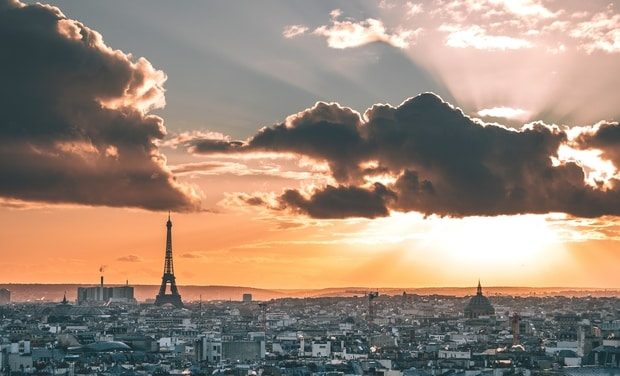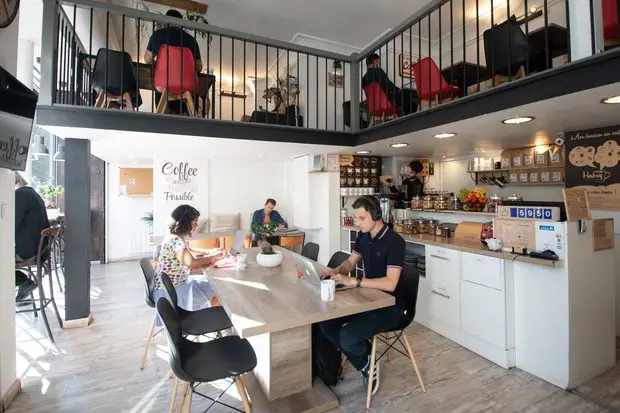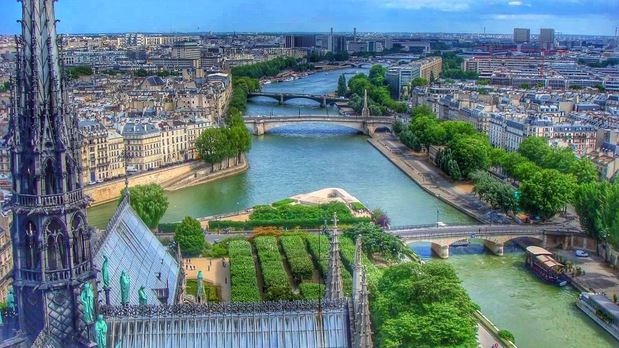Have you ever wondered how to order coffee in France? This article will give you the answers you need. Read on to learn about the different types of coffee, ranked by popularity, that you can sip in a café or in a restaurant.
1 – Short Black Coffee or Espresso

The most popular coffee of them all, the espresso, is often ordered in restaurants and cafés.
The key to making it successfully is, of course, having a quality raw material – finely ground coffee beans. Then you must thoroughly press it, pour the right amount of water in at the correct temperature, check the pressure of the machine, and calculate the extraction time.
If all the steps are executed correctly, the final espresso will be delicious. However, we all know that there are as many coffee variations as there are baristas.
Regardless of the preparation style, the espresso is a strong, short, black coffee, so don’t expect to drink it from a mug.
2 – Milky Coffee
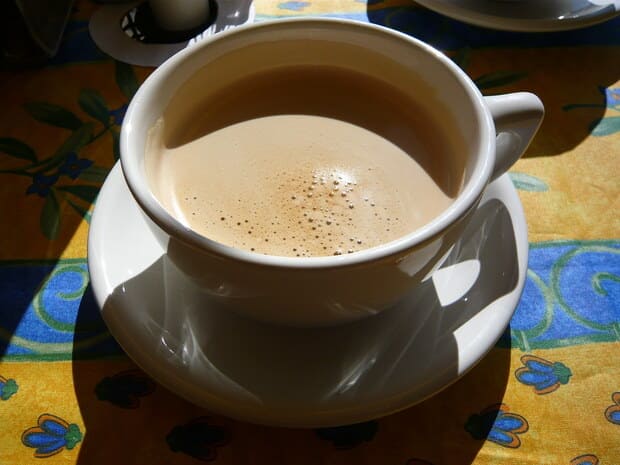
This is a favorite drink of those who don’t like the bitterness of coffee.
French people usually have milky coffee at breakfast, but you can also drink it throughout the day.
The recipe is very simple – you make a double espresso in an Americano sized cup, then you add up to twice as much milk as there is coffee, according to your preference.
The final drink is around seven ounces.
3 – Long Black, Americano, or Lungo Coffee
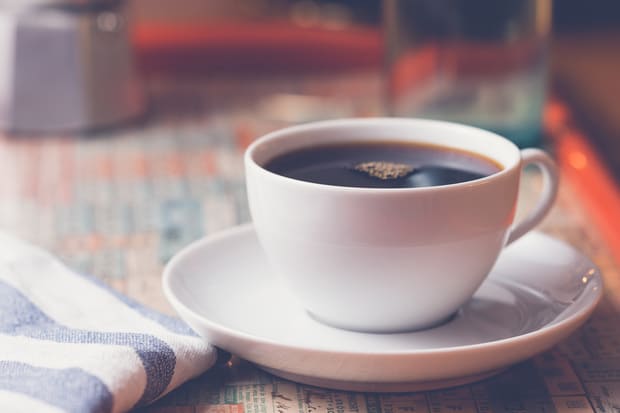
Often perceived as a tasteless coffee, the Americano or long black coffee has a bad reputation.
But nothing says that it has to be flavorless: if you use good grounds, this coffee is a delight.
Served in a cappuccino cup, the Americano is a long black coffee, meaning that there’s more water in it than in a regular espresso.
First hot water is poured into a cup, followed by an espresso, and the drink is ready. That’s all there is to it!
4 – Cream Coffee
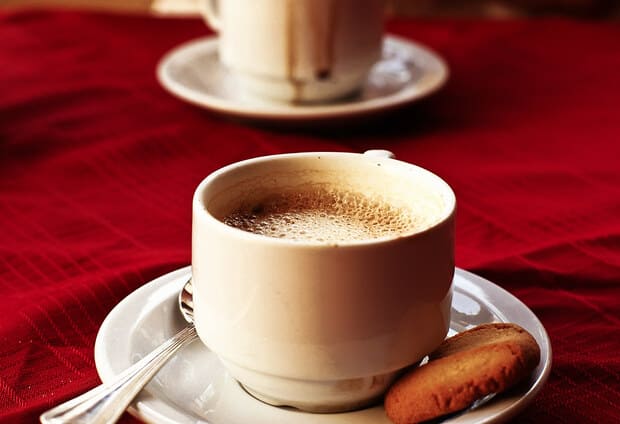
As its name implies, cream coffee is made with cold liquid cream.
It is a long black coffee, unlike the café noisette which is a short black coffee.
The liquid cream is slightly whipped to make it smoother before it is poured into the coffee. The final result is an indulgent, creamy coffee.
5 – Café Noisette
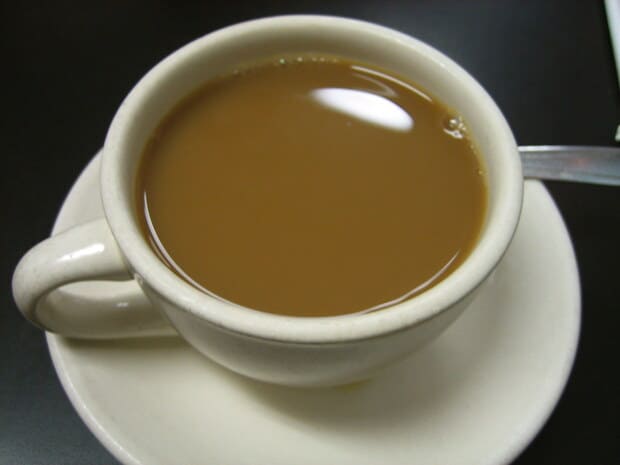
Café noisette means hazelnut coffee, but if you expect it to have a hazelnut flavor, you’re going to be disappointed.
To understand its name, you have to look at the color of the drink instead of the ingredients. The brownish color of this coffee resembles that of the hazelnut.
So if there is no hazelnut, what is in it? Café noisette is simply a cup of espresso with a tiny amount of milk (or milk foam – opinion is divided on which is best).
The amount of milk cannot exceed a third of the cup.
Unlike milky coffee, café noisette is served in an espresso cup. The overall size of the drink is between 1 and 2 fl oz.
6 – Ristretto or Strong Espresso
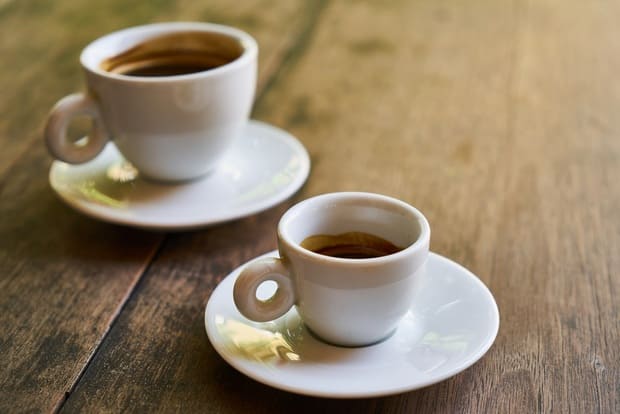
Ristretto is the ultimate strong coffee.
Made with the same amount of grounds as an espresso but only half its size, ristretto is an intensely flavorful coffee.
We call it strong because only a small spoonful of water is added when it is brewed. If you don’t like bitterness, this is not the drink for you.
7 – Latte
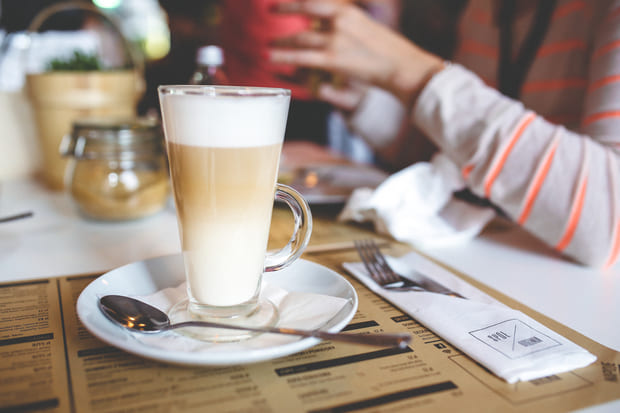
A latte is an aesthetic variety of milky coffee.
With its sweet flavor, a caffè latte is perfect for a gourmet break.
To make this drink, you combine steamed milk with a single shot of espresso then gently pour it into a tall, narrow glass. By doing so, you keep the milk foam on top and prevent the layers from blending.
The final result is a delicious and nicely layered beverage.
8 – Double Espresso
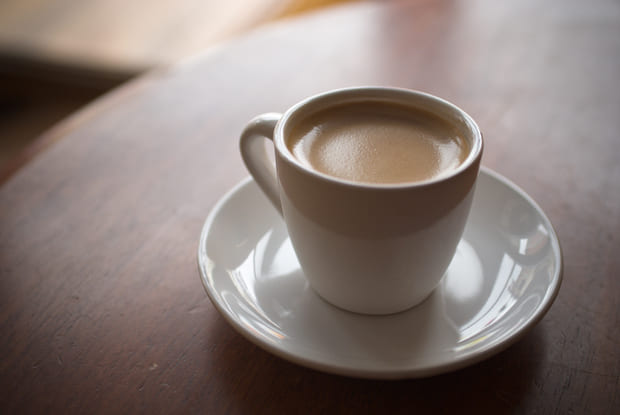
Double espresso differs from long black in just one way:
A double espresso is made with two shots of espresso whereas a long black coffee is made with a single shot of espresso and water.
9 – Decaffeinated Coffee
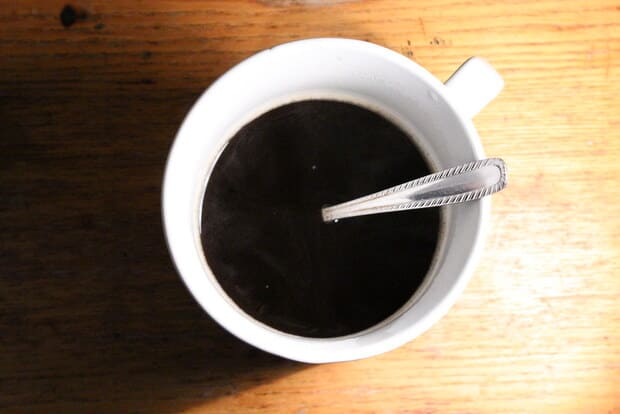
Decaffeinated coffee doesn’t require any particular expertise to brew. The crucial step is the selection of the coffee beans.
When you go to a café and ask for what French people affectionately call a “deca”, the barista will bring a coffee made from caffeine-free beans.
As caffeine is known for its stimulating power, some people want to avoid it. Decaffeinated beverages are a good option if you want to drink tasty coffee without some of the negative effects.
10 – Iced Coffee
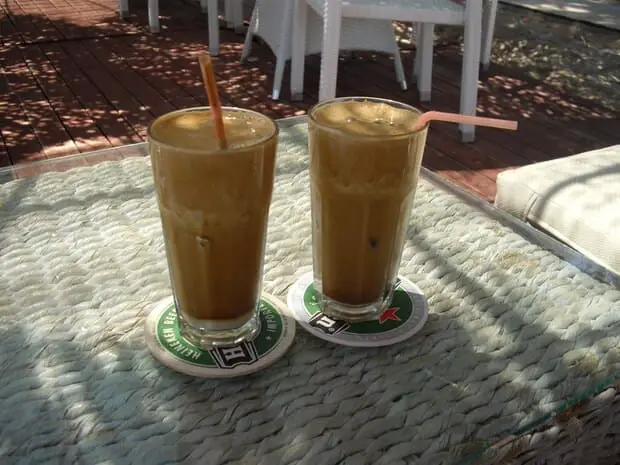
Iced coffee is a cold beverage that you can drink during warm weather.
Made with either instant coffee or double espresso, the recipe is straightforward and simple.
The coffee is poured into a cappuccino cup with milk and sugar. The mix is then put into a shaker with ice cubes.
Once the ingredients have been properly combined, the drink is served in a tall glass with a straw.
11 – Cappuccino

For a cappuccino to be good, two ingredients are required: a shot of espresso and milk foam.
After the coffee is poured into a cappuccino cup, sugar is added, followed by thick, creamy milk foam.
Sometimes, baristas do what is called “cappuccino art” and draw designs on the surface of the coffee.
12 – Macchiato
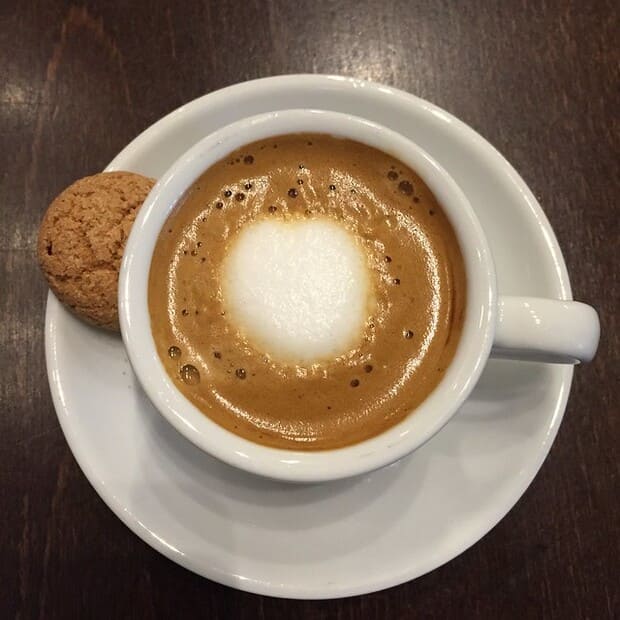
Caffè macchiato and café noisette look nearly identical. The only difference is that one is made with foam while the other is not.
In a macchiato there is a shot of espresso, a few drops of milk, and some milk foam.
It is basically an espresso with just a tiny amount of whipped milk.
The foam comes to the surface of the coffee and gives it a satisfying appearance.
13 – Vienna Coffee
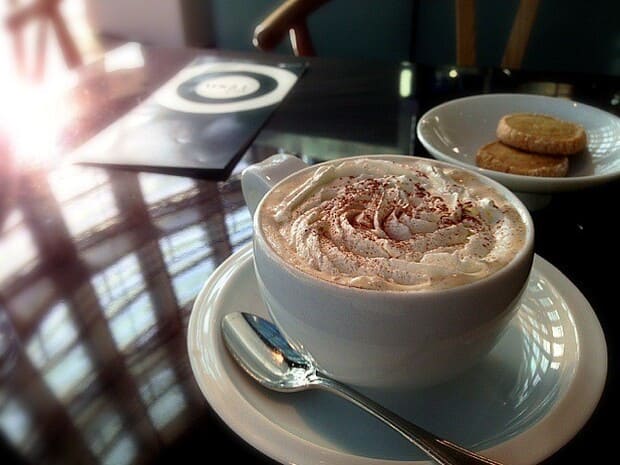
Vienna coffee is a delicious drink that you’re sure to enjoy.
The steps to make it are rather simple: take some cream, whip it (or buy some that is ready-to-eat), and place a generous helping of it on the surface of the coffee.
Whipped cream is the reason that Vienna coffee is loved by so many.
14 – Mocaccino or Mocha Coffee
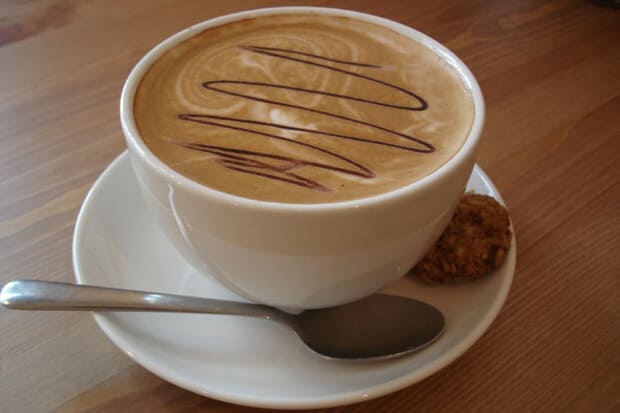
A mocaccino or mocha coffee is a coffee-based beverage with a hint of chocolate and milk.
After diluting cocoa in coffee syrup, the espresso is poured. Hot milk is then blended in, and the foam is saved to decorate the surface.
Baristas sometimes like to add a bit of whipped cream on top of the drink as well.
15 – Irish Coffee
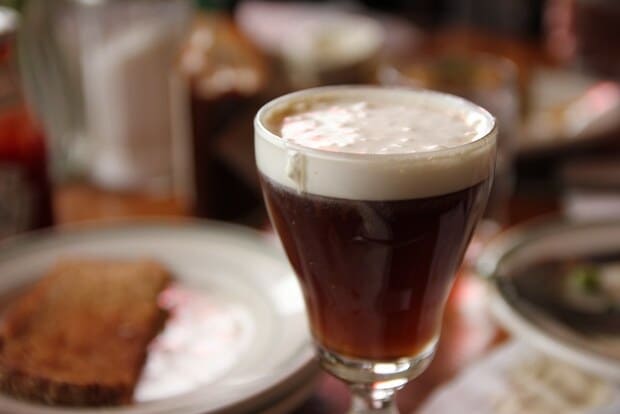
Irish coffee is the pick-me-up that you need any time you feel a bit down.
Containing coffee, whiskey, and liquid cream, this drink will leave a lasting impression on you.
So how is it made?
First, whiskey and sweetened coffee are heated separately. The whiskey is then poured into a glass, followed by the coffee. Finally, stirred cream is carefully placed on the surface of the coffee.
Once again, we have a delicious drink with beautiful layering.
16 – Filtered Coffee
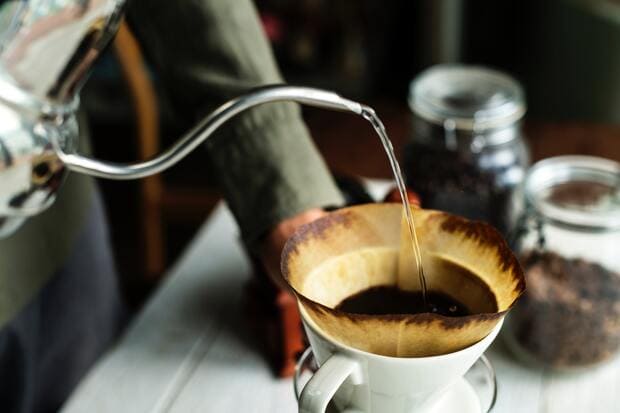
Filtered coffee is the good old coffee that has somehow become hard to find in cafés. It reminds us of the coffee we used to drink at our grandmother’s house before Nespresso machines existed.
As its name suggests, a filtered coffee machine is required to make filtered coffee. Unlike the coffee maker that most French households use, there’s a filter in which the grounds are put. Water drips through the grounds, and the trickling liquid becomes the coffee.
Filtered coffee is still served in some traditional places, but it has almost completely disappeared from restaurants and cafes.
Q&A
Do French people enjoy drinking coffee?
According to a 2018 poll, 83% of French people drink coffee. Even though tea is gaining more and more popularity, coffee is still also very popular.
At what time do they usually have a cup of coffee?
French people are used to having coffee in the morning or after lunch. Some drink it throughout the day, but for many a morning coffee is a must.
Is coffee strong in France?
Yes. The coffee usually served in restaurants is strong, but you can still ask for a long black if you prefer.
How much does a cup of coffee cost in France?
It depends on where you are. In the countryside, the price of a cup of coffee is around €1.50, while in Paris it is around €2.50. There are some exceptions, of course.
Does France cultivate coffee?
Absolutely. This answer is surprising to many, but France does cultivate coffee. French coffee farms are mainly located in overseas territories, but they do produce a very small crop.
Is coffee usually served with something?
In cafés and restaurants, coffee is generally served with a sugar lump or a packet of sugar. It is also very common to find a cookie or a tiny square of chocolate next to your cup of coffee.
Why do we say “going to a café”?
It is a case of metonymy. The café – which literally means coffee in English – also refers to a cafe. In other words, it is both the name of the drink and the place where we drink coffee.
What’s the French word to describe tasteless coffee?
English speakers, depending on where they’re from, might call tasteless coffee “dishwater” or “gnat’s pee”. French speakers, on the other hand, refer to it as jus de chaussettes (“sock juice”) because WWII soldiers used their socks as filters for their coffee.
What’s a “pause café” in France?
A pause café is a coffee break, and it is pretty important for French workers. When they feel they need to take a breather (usually around 10 am and 4 pm), they go grab a coffee from the coffee machine.
What’s a “café-clope”?
Another French ritual, a café-clope is literally the act of drinking coffee with a cigarette. During their break, workers often go outside with a cup of coffee in one hand and a cigarette in the other.
What does “c’est fort de café” mean?
This expression can be translated as “that’s going too far”. French people use it to talk about something that is hard to believe or completely out of proportion. While it contains the word for coffee, it usually has nothing to do with the drink!
Why do French people say “prendre un petit café”?
French waiters love adding the word “little” when they’re asking if you want a dessert or a coffee. Un petit café means “a little cup of coffee”, but it has nothing to do with the size of the cup. Indeed, it refers to the emotional value of the drink or the fact that it is the daily coffee.
What’s a “café du pauvre”?
Literally “poor people’s coffee”, a café du pauvre is coffee mixed with chicory. The expression was born during a time when only the upper class could afford coffee while the lower class made do with chicory.
I aim to share my tips and recommendations for the beautiful country of France. My goal is to help you plan your next adventure, whether it’s a weekend getaway or a once-in-a-lifetime trip. From finding the best hotels and restaurants, to discovering unique activities and sights, I’ve got you covered!


